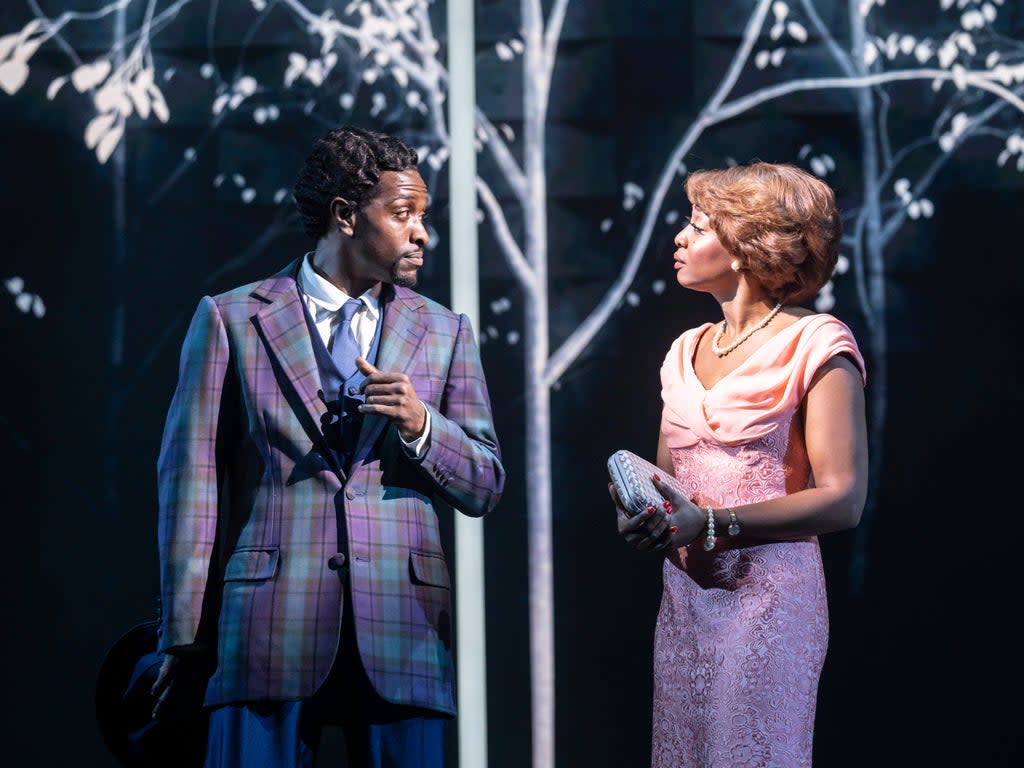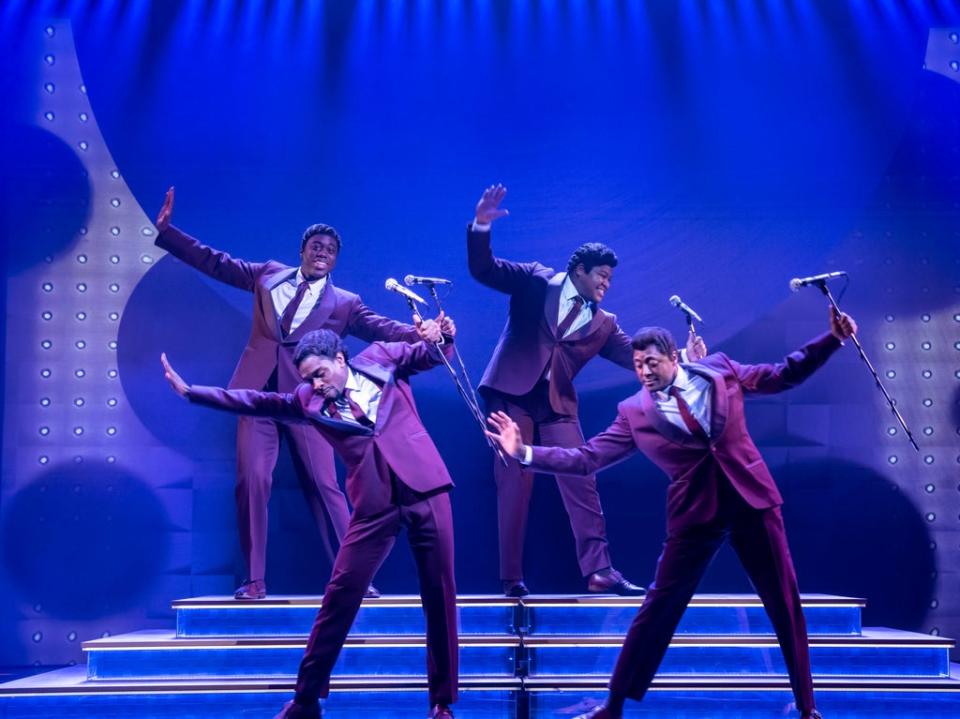The Drifters Girl review: Beverley Knight shines within weakly scripted jukebox musical

- Oops!Something went wrong.Please try again later.
- Oops!Something went wrong.Please try again later.
- Oops!Something went wrong.Please try again later.
Jukebox musicals tend to fall into one of two categories. In one, the artist’s true story is so interesting, it has to be immortalised on stage. In the other, every song in their back catalogue is such a hit that a vague, if slightly nonsensical, plot can be made up around it (here’s looking at you, Mamma Mia). The Drifters Girl sits somewhere in the middle.
The story of the R&B group best known for constantly changing their members, it is a tale that’s interesting enough on its own – also highlighting the plight of Black musicians in the mid-20th century. The songs are catchy and fun, too, if not always instantly recognisable. Chances are you know “Save the Last Dance For Me” and “Under the Boardwalk”, but the biggest number of the whole musical – Ben E King’s “Stand By Me”, which is performed twice – isn’t even a Drifters song.
Really, The Drifters Girl is less about the band itself than Faye Treadwell (played by queen of soul Beverley Knight), the woman who became their manager following the death of her husband. Faye’s own story is held up as an inspiration, how one woman took on the music industry in the face of excessive racism and sexism. The revolving door of members (Wikipedia lists 66 different Drifters performing with the group from 1953 to 2015) is presented as a shrewd business move from Faye, rather than a slightly soulless branding exercise.
With so many Drifters coming and going, you’d expect The Drifters Girl to have a huge cast, but there are only six actors in the show: Knight, her young daughter (Savanna Musoni) and the band themselves, played by Adam J Bernard, Tarinn Callender, Matt Henry and Tosh Wanogho-Maud. The four men portray every Drifter, hopping from part to part and showing (whether intentionally or not) just how easily replaceable these singers were. They also take on every other role, from record label execs to Faye’s husband and, erm, Bruce Forsyth.
With minimal costume changes and actors often flipping from one role to another, the show is naturally dependent on stereotypes and caricatures. Men play women by dramatically batting their lashes, which will have some audience members rolling in their seats while others roll their eyes. Cheap laughs like these are woven throughout the exposition-heavy script, which darts between and rushes over certain storylines in an attempt to make the songs fit the scenes. Ultimately, however, the musical numbers feel tacked on and unrelated to the action that’s just played out before us.

Among the roar, however, there are moments of subtlety. The framing narrative of Faye telling her story to her 11-year-old daughter may be the oldest device in the book, but the ode she sings to her “Harlem Child” is hauntingly beautiful and shows Knight at her best. The show naturally touches on racism, but it’s at its most striking when the group travel to the UK and perform with shiny smiles while being met with constant prejudice. To watch four Black men grinning and dancing beneath the neon words: “No Blacks, no dogs, no Irish” is a shocking image and one that highlights the plight faced by Black musicians at the time, forced to keep doo-wopping in the face of institutionalised discrimination. As The Drifters and their girl, the cast work in harmony – here’s hoping they get the chance to do it again on a better-written show.
‘The Drifters Girl’ runs at the Garrick Theatre
Read More
‘It feels like a step forward’: The play that’s paving the way for pregnant actors in theatre

